(Styles, features, recommendations)
Look awesome and avoid leg cramps on your trip by choosing the right pair!
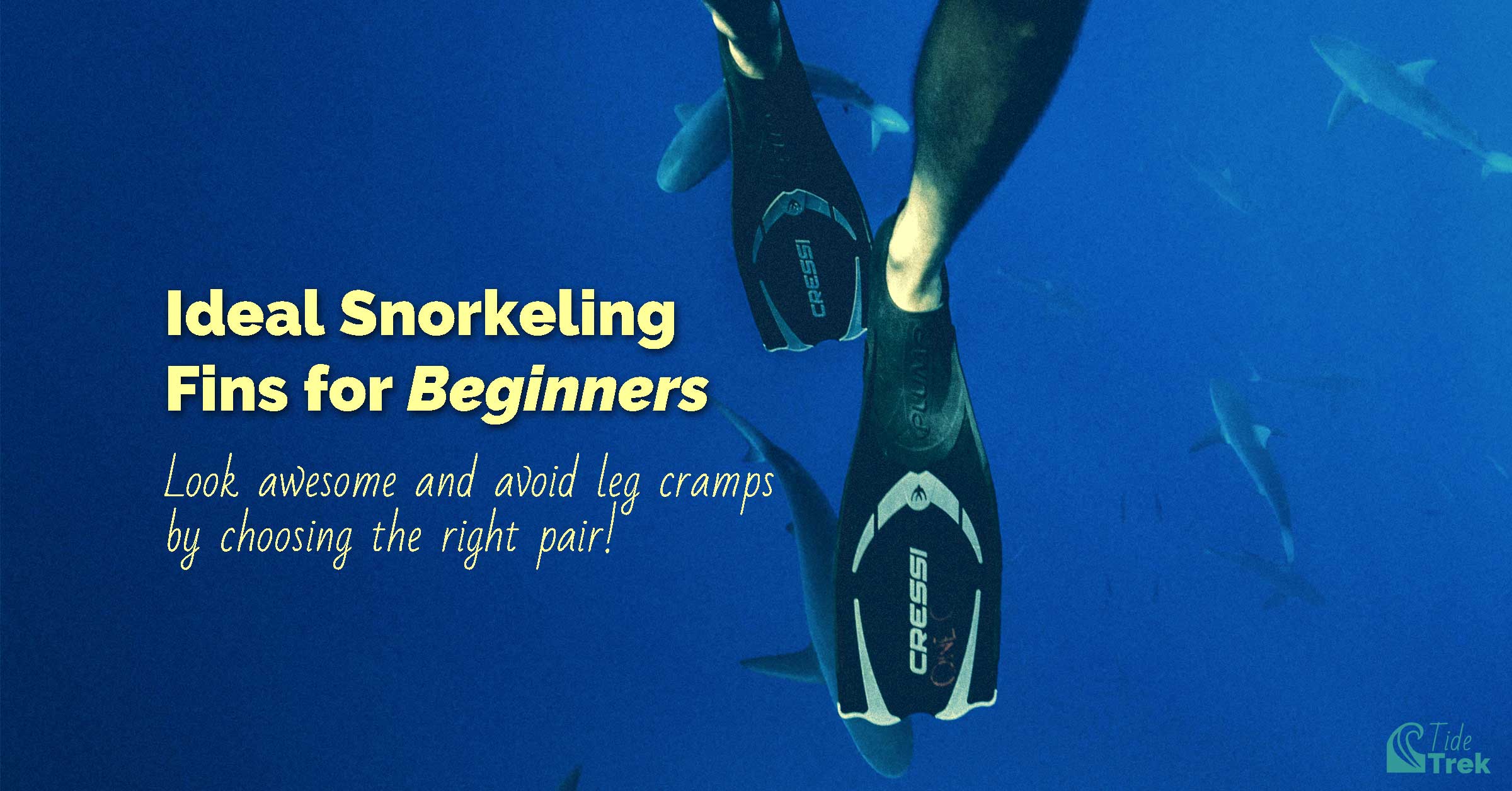
Looking to buy your own snorkeling equipment? Awesome! Your underwater adventures are going to level up over everyone else who’s renting! I’ve already covered how to choose a mask and snorkel that suits your face and ability. So today, let’s talk all about the best snorkeling fins for beginners!
When was the last time you had to buy a pair of shoes?
And not just any old pair of shoes, but some quality footwear you needed for a specific activity? I’m talking long-distance running, hiking, or climbing over all kinds of terrain, rain or shine. Did you walk into a random sports shop at the last minute? Did you buy the first thing that had an okay fit?
I’m certain you absolutely did not! I bet you spent a lot of time researching the features you’d need. You read reviews, considered your fitness level, and double-checked your foot size. Perhaps you also spent time breaking in your new footwear before using it on a critical trek, race, or trip.
The point is, footwear is finicky. Sports footwear even moreso! And guess what? Snorkeling fins are also sports footwear! Even so, many casual tourists seem content to rent shoddy “one-type-fits-all” fins. Either that or they buy a cheap pair last-minute at a hotel gift shop.
Do you even need fins for snorkeling? Yes, you do! Here’s why:
Swimming in the ocean is not at all like swimming in a pool.
The ocean has waves and currents, and your snorkeling site won’t have neatly defined shallow and deep ends. It may not have an area you can stand in at all! That means you’re going to need fins to be safe and comfortable while snorkeling.
The surface area of the fin means you can exert more force on the water with each kick. These physics allow you to swim for extended periods without over-exerting yourself. You will also be able to swim against waves and currents with far less effort.
In short, snorkeling fins allow you to be deliberate and precise about your movement and position in open water environments.
For the most part, you should relax while snorkeling and float with minimal exertion. But when necessary, your fins will keep you from being tossed and buffeted by stray waves. They will also allow you to safely maneuver over and around coral, rock formations, and other sea life.
Related Post: Yes, You Need Fins for Snorkeling (5 Reasons Why)
Alright, maybe you’re not a frequent snorkeler and you just want to try the sport for fun, so why should you invest in your own snorkeling gear?
Well, if you were going to try hiking or camping for the first time, would you rent a generic pair of hiking boots or use your regular walking shoes? I certainly hope not! Using gear that’s suited to your body and fitness is critical no matter what your experience level is.
A well-fit pair of snorkeling fins will:
- Save your legs from cramps
- Keep you from getting tired quickly
- Give you the speed, power, and maneuverability to get the most from your underwater adventure.
You’ll also be able to practice finning (kicking) technique with your new fins (e.g. in your hotel pool). Practise is important so you don’t kick anyone or damage any coral by accident. Coral reefs suffer accidental damage from thousands of inexperienced tourists every year. Using fins you’re familiar with will help you be careful and controlled in the water.
So what is the right pair of snorkeling fins for beginners?
Quick answer: Something short, flexible, and lightweight. That’s just a general guideline though. To find the best pair of fins for you, you’ll need to do some shopping!
Obviously, I love water sports (otherwise why would I be writing this blog??). But I’ve always hated buying fins. Well actually, I plain hate shopping for anything, but I especially loathe shopping for footwear of any kind. That’s because my feet are quite small and narrow, plus I’m super sensitive to even minimal amounts of foot discomfort. So it’s often quite an ordeal for me to find exactly what I need without compromising on comfort, function, style, or price.
For now, you might be feeling overwhelmed by all the choices for fins out there. Is there a difference between SCUBA and snorkeling fins? Full-foot vs. open-heel? Paddle vs. split fins? Long vs. short blades? Maybe you’re wondering what the heck a split fin even is?
Don’t worry! I’ll go over everything you need to know about snorkeling fins and give you some recommendations to start your shopping online. I’ve been snorkeling since I was a kid and I’ve gone through a wide range of equipment types over the years. There are simple questions you can ask yourself to help narrow down your choices. Additionally, there are many online dive shops where you can find exactly what you need in time for your next vacation!
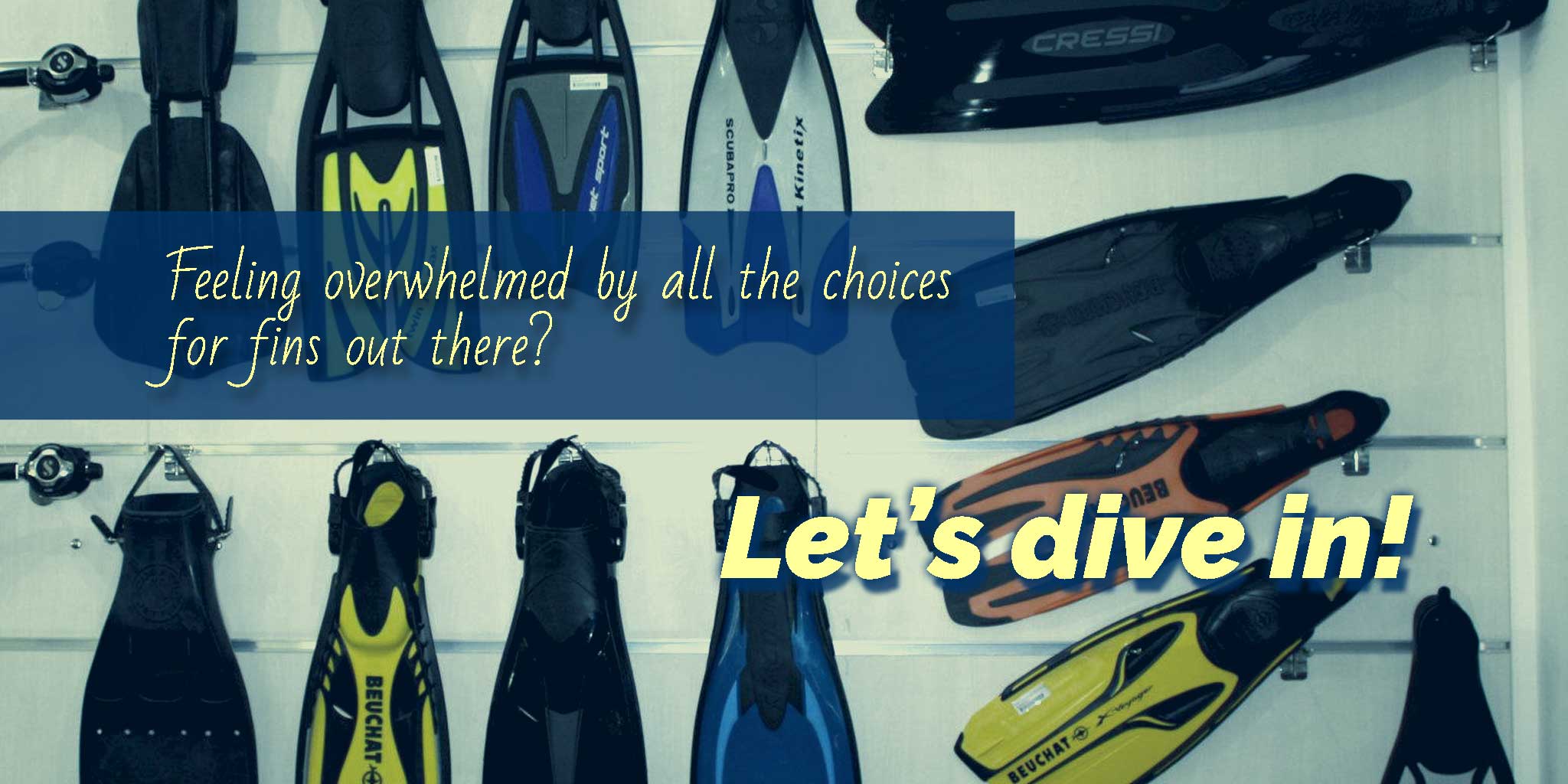


How much does a quality pair of snorkeling fins cost?
Quick answer: A pair of snorkeling fins for beginners will set you back $20 – $80+ US dollars. That range depends on the length of the blade, the materials used, the overall design, and any special features.
Certain designs and materials, such as split fins and composite synthetics, are more expensive, but the size of the fin’s blade is the biggest cost factor. So as a rough guideline, the longer the fin, the more expensive it will be. Well-designed fins are precision-engineered to maximize the power you get from each kick. That includes little details you may not have thought about like how the foot pocket is attached to the fin’s blade, how the flexibility of the blade itself changes along its length, or how water is channeled along the blade and off its edge to improve thrust efficiency.
For snorkeling and SCUBA fins, there are a few brands that lead the market for quality and reliability including Cressi, Mares, Scubapro, Atomic, Beuchat, Omer, Oceanic, and Aqualung. Some of these companies have been around for decades and are a great choice no matter your experience level. Your best bet for finding ideal snorkeling fins for beginners is to visit a dive shop that carries these brands either on- or offline.
Should you buy your snorkeling fins online or at a physical dive shop?
Quick answer: Start your browsing online, then go to a physical dive shop if you live near a good one. Otherwise, buy online from a store that has a good return policy in case the fins don’t fit well.
Related Post: Where to buy high-quality snorkeling gear
As with shopping for any kind of apparel, the main advantage of going to a physical shop is you’ll get to try on the fins before you buy them. This may be a better option if you tend to have difficulty finding well-fit footwear (e.g. if your feet are wider or narrower than average). But what if you don’t live within an accessible distance of a dive shop? What if it only has a limited stock of models and sizes?
In that case, an online dive shop is your best option. Not only will you have a broader selection to choose from, but you’ll get the convenience of home delivery as well. Online dive shops also have frequent sales and promotional offers. But you may still have to pay extra for shipping and customs depending on your location.
Whether you choose to buy on- or offline, don’t make your purchase at the last minute!
Take the time you need to research and browse different models, read reviews, and make a well-thought-out shortlist. Thankfully, I’ve already done a lot of that for you to write this article!
I know for some of us (raises hand) shopping is like getting our unmentionables waxed! But taking the time to shop thoughtfully will ensure you won’t waste money on a product that doesn’t work well for you. A little unpleasantness is totally worth the countless hours of comfortable, stress-free snorkeling you’ll get out of it!
So where should you shop? I do all my online dive shopping at Leisure Pro. I’ve never had a bad experience with their customer service and their shipping is reasonable (even to Canada). Their website is also well designed and easy to browse. If you’re in the US, many of their items qualify for free shipping with a 60-day return policy. For fins, they also have a Pressure-Free Fit Guarantee where you can exchange your fins for a different size within 30 days of purchase without additional shipping costs (if you’re in the continental US).
Other popular online dive shops include Divers Direct, Divers-Supply, Scuba.com, and Simply Scuba (shipping from the UK). I’ve not bought anything from these stores, though, so I can’t personally vouch for them.
What kinds of fins are best for inexperienced snorkelers?
In contrast to SCUBA fins, snorkeling fins are designed to be soft and flexible for moving through surface waves and currents. They tend to be shorter (between 20-25 inches) for better maneuverability. Shorter fins also reduce your chances of accidentally damaging coral in reef environments. An ideal pair of fins should allow you to snorkel for one or two hours without becoming fatigued.
I’ve separated the price ranges below into three rough categories: Budget (US $30 and under), Standard (US $30-$70), and Premium (US $70 and over). These categories are rough, however, and you may find that the category is slightly off if you follow-through on a link during a sale or promotion.
Recommended snorkeling fins for beginners
You’re a beginner snorkeler if you’re at least one of the following:
- Never snorkeled before
- Not a strong swimmer
- Not comfortable in the water
The following fin recommendations are all short, soft, and have full-foot pockets. Full-foot fins are easier to use because more energy from each kick is transferred into the water than open-heel fins. For an ideal fit with no chafing, wear your fins with a thin fin sock even if you’re swimming in tropical waters.
1. Cressi Clio Fin
- Price category: Budget $
- Foot pocket: Full-foot
- Stiffness: Soft/Flexible
- Sizes: XSmall (US Women’s 6-7, US Men’s 4-6) to XLarge (US Women’s 13-14, US Men’s 12-13)
- Color options: Yellow
- Special features: Open-toe adds comfort and allows water to flow through the foot pocket; yellow color increases the snorkeler’s visibility (great for kids!)
- Other notes: Lightweight for easy traveling. Some folks have found that sizes run small so size up relative to your normal fit, especially if you want to wear a fin sock with these
2. Scubapro Jet Sport Full Foot Fins
- Price category: Standard $$
- Foot pocket: Full-foot
- Stiffness: Stiffer blades are suitable for basic SCUBA activity, but are still quite flexible
- Sizes: XSmall (US Women’s 6.5-7.5, US Men’s 5-6) to XLarge (US Women’s 14+, US Men’s 13-14)
- Color options: Black/Gray
- Special features: Vents reduce drag and resistance on both forward and backward strokes; ergonomic foot pocket can be worn comfortably barefoot or with a thin fin sock
- Other notes: Best for warm water activity and light enough for easy traveling
3. Mares Avanti Super-Channel Full Foot Fins
- Price category: Premium $$$
- Foot pocket: Full-foot
- Stiffness: Soft/Flexible
- Sizes: Small (US Women’s 4-5, US Men’s 3.5-4.5) to 2X-Large (US Women’s 13+, US Men’s 11.5-12.5)
- Color options: White/Black
- Special features: Open-toe adds comfort and allows water to flow through the foot pocket; thrust channels help direct water off the blade’s edge
- Other notes: Best for warm water activity and light enough for easy traveling
Snorkeling fins for beginners FAQ
For those of you who are still undecided or a bit more experienced, here are some questions that may help you narrow down your choice!
In the following sections I cover:
- Combo sets
- SCUBA vs. snorkeling fins
- Blade length
- Full-foot vs. open-heel fins
- Split fins vs. paddle (standard) fins
1. Should you buy a snorkeling combo set that includes a mask, snorkel, and fins?
Quick answer: No. Buy your snorkeling fins separately, not in a set with a mask and snorkel.
As you’re shopping, you’ll come across a lot of combo sets that include a face mask, snorkel, and fins. Often, these three-piece combos will be much cheaper than buying each item on its own. Seems like a good deal, right?
Well… not necessarily!
Why? Because that’s three separate items that must be ideal for your size, fitness, and experience level. You could get away with a mask and snorkel combo, but fins too? Not likely!
In my opinion, if you’re shopping for all three items, and you happen to find a combo that includes models you’ve already researched as being good options for you, then go for it. Otherwise, shop for your feet separately! Finding ideal footwear is hard enough without factoring in other specialty equipment as well!
So what should you look for in a snorkeling fin? Well, let’s get one common misconception out of the way first…
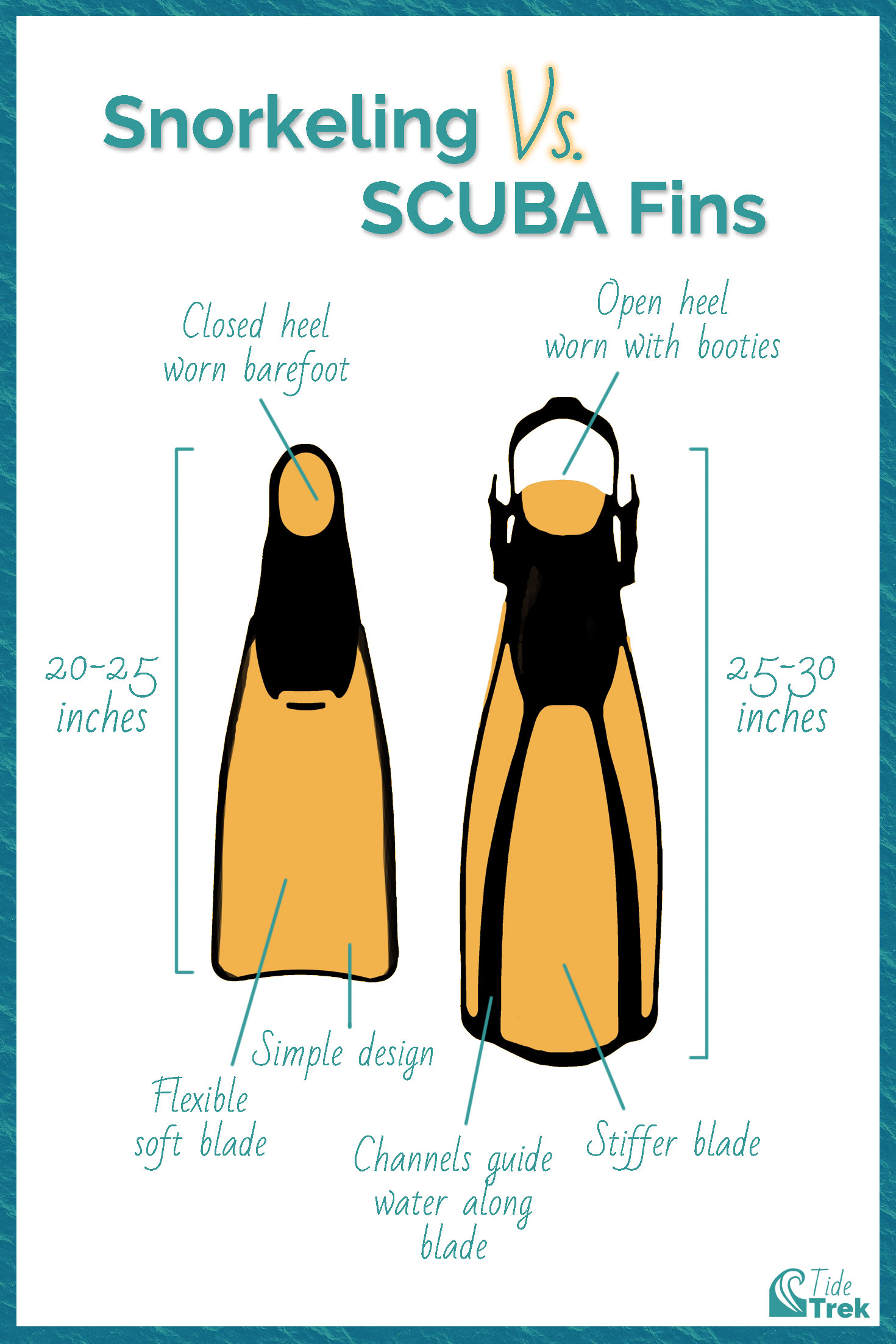


2. Can you use SCUBA fins for snorkeling?
Quick answer: Technically you can, of course, but you shouldn’t.
SCUBA fins are designed to be used at depth and to compensate for all the heavy gear SCUBA divers wear. That means the blades tend to be stiff and bulky. The sole of the foot pocket is particularly inflexible on SCUBA fins. That`s to maximize thrust and accommodate a thick, rubber-soled bootie. SCUBA fins are also longer (typically over 25 inches) for more power in deep water where the pressure is greater.
Related Post: Snorkeling vs. SCUBA fins, what’s the difference?
Longer, bulkier fins are great for propelling you in deep water with weights and a tank strapped to you. But that extra bulk means your legs have to work harder. As a result, SCUBA fins tend to be cumbersome and inefficient for snorkeling. This is especially true if you’re inexperienced and/or have a weak kick.
In short, the best snorkeling fins for beginners are not fins that a SCUBA diver would use!
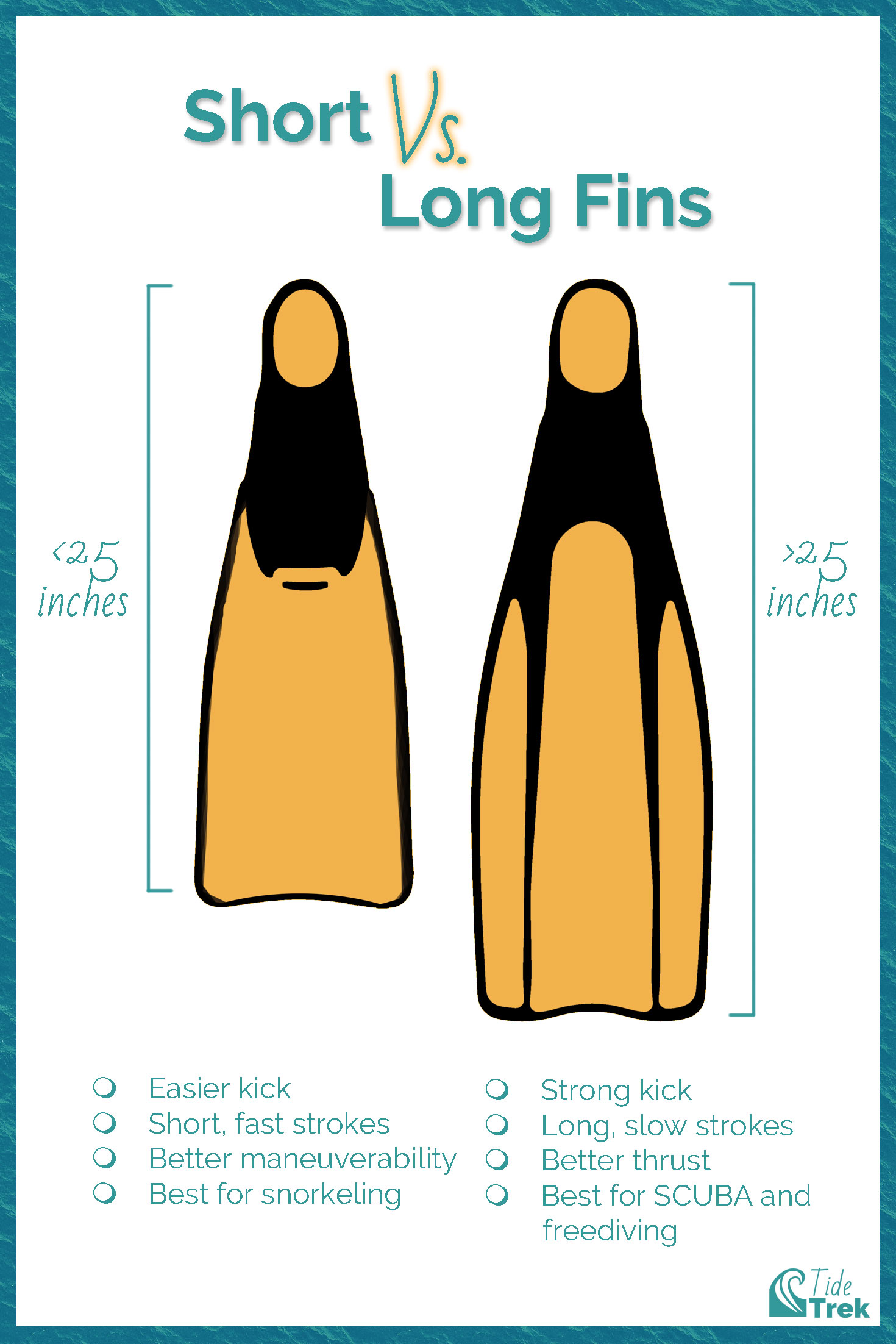


3. Are short fins better for snorkeling? What if you want to do SCUBA too?
Quick answer: For most casual snorkelers, shorter fins (less than 25 inches) are better.
The main reason shorter fins are better for snorkeling is that they’re easier on your leg muscles. You don’t need as much power with each stroke, and each stroke will be shorter relative to using longer fins. Many casual snorkelers will be accustomed to a swimming flutter kick, which requires short and fast strokes. That means kicking with a shorter fin will feel more familiar. Adjusting your kick to the shorter fin will feel less awkward.
Short fins are also less likely to damage delicate coral. If you’re not used to wearing a fin, thinking of your feet as taking up several times more space than they usually do is tricky! Beginners can be clumsy with their feet while learning to kick. A short fin will decrease your chance of kicking coral, wildlife, and even your fellow snorkelers!
Related Post: Short or long fins for snorkeling, which is best?
All that being said, shorter fins mean less thrust, speed, and acceleration with your kicks. Power and speed aren’t top priorities for most snorkelers, though. You`ll be chilling at the surface most of the time, not swimming long distances through strong currents.
But, what if you want to use your fins for SCUBA too?
If you’re looking for something more versatile, then you’ll want what I call a “Goldilocks” fin. Something longer and stiffer than a fin designed for snorkeling, but not too long or too stiff!
Here are some longer full-foot fins that you can use both for casual snorkeling and basic open water SCUBA:
1. Oceanic Viper Full Foot Fins
- Price category: Standard $$
- Foot pocket: Full-foot
- Stiffness: Stiffer blades are suitable for basic SCUBA activity, but are still quite flexible
- Sizes: US Women’s 4-5 to 13+, US Men’s 3-4 to 12-13
- Color options: Black/Blue
- Special features: Thrust channels help direct water off the blade edge; made of composite thermal plastic rubber and polypropylene for extra durability
- Other notes: Best for warm water activity and light enough for easy traveling. Small sizes may need some thin fin socks for a snug fit
2. Mares Plana Avanti Tre Full Foot Fins
- Price category: Standard $$
- Foot pocket: Full-foot
- Stiffness: Stiffer blades are suitable for basic SCUBA activity, but are still quite flexible
- Sizes: Small (US Women’s 4-5, US Men’s 3.5-4.5) to X-Large (US Women’s 11.5-12.5, US Men’s 9.5-10.5)
- Color options: Black
- Special features: Thrust channels help direct water off the blade’s edge; ergonomic foot pocket can be worn comfortably barefoot or with a thin fin sock; stabilizers improve energy transfer from foot to blade; open-toe adds comfort and allows water to flow through the foot pocket
- Other notes: Best for warm water activity and light enough for easy traveling. Some users recommend sizing down (sizes run large)
3. Mares Volo Race Full Foot Fins
- Price category: Premium $$$
- Foot pocket: Full-foot
- Stiffness: Stiffer blades are suitable for basic SCUBA activity, but are still quite flexible
- Sizes: Small (US Women’s 4-5, US Men’s 3.5-4.5) to 2X-Large (US Women’s 14+, US Men’s 11.5-12.5)
- Color options: Black/Blue
- Special features: Pivoting blade technology adds “snap” to kicks, improving thrust efficiency; thrust channels help direct water over the blade’s edge; vents reduce resistance for an easier kick
- Other notes: Best for warm water activity and light enough for easy traveling (though the 2X large is on the heavy side at nearly 4 lbs)
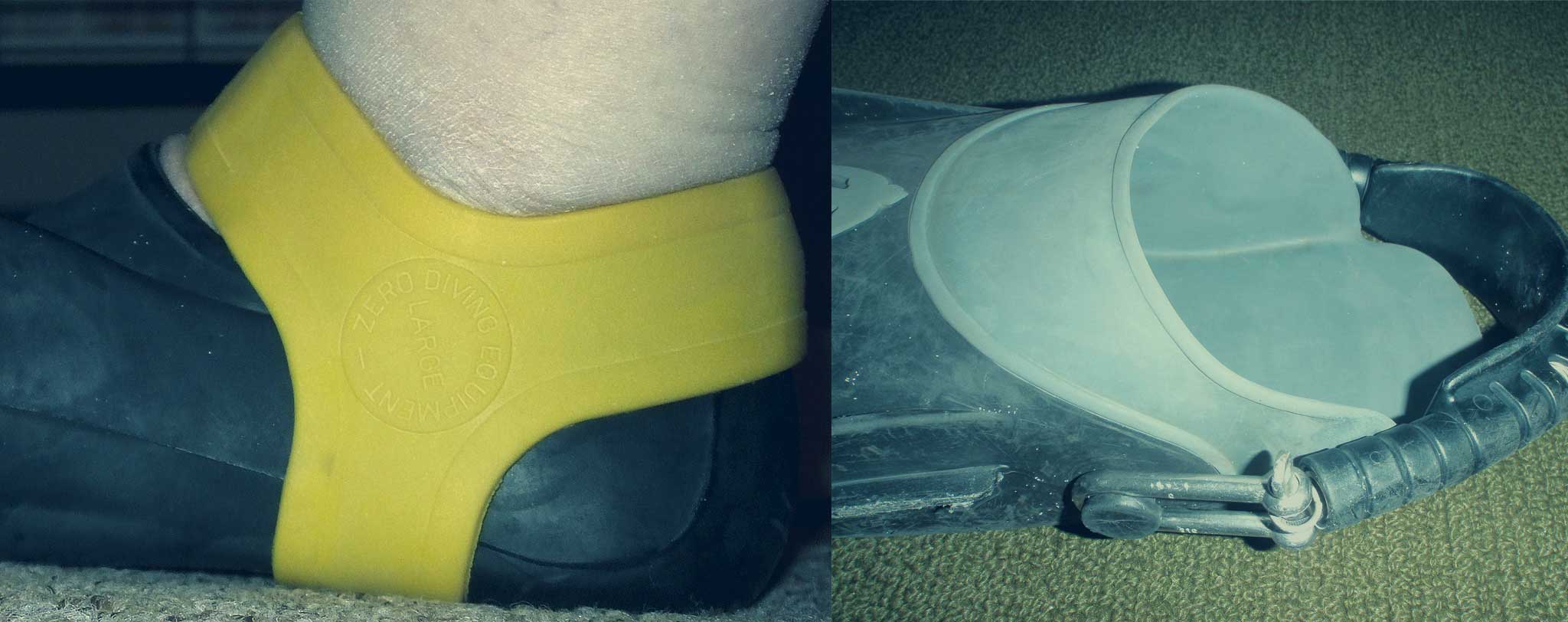


4. Should you use fins with a full-foot pocket or an open-heel strap for snorkeling?
Quick answer:
- Warm water – full-foot pocket
- Cold water – open-heel/strap pocket.
The main deciding factor here is the temperature of the water you’ll be snorkeling in. Most casual snorkelers will be swimming in warm, tropical water, making full-foot pockets the better choice.
Full-foot fins tend to weigh less so they’re easier on your legs (and your luggage!) They are also more efficient because more energy from your kick will be transferred from your leg to the blade via the full-foot pocket. Lastly, you can wear full-foot fins barefoot or with some thin fin socks, so you don’t need to bring a bulky pair of booties with you on your trip. That makes them a more affordable and less complicated option for beginner snorkelers.
Open-heel fins work better with booties (dive boots). SCUBA divers need booties for walking while wearing their gear out of the water and for insulation in colder water. Will you be snorkeling in colder water? Will you need to walk over any rough or rocky terrain to get to your snorkeling site? If yes, then you’ll be better off with a pair of booties and open-heel fins!
Related Post: Open-Heel Vs. Full-Foot Fins (When To Use Each)
Here are some softer open-heel fins that should be great for beginner snorkelers, including a couple of versatile options that can work for basic SCUBA activity as well:
1. Cressi Palau Long Adjustable Fins
- Price category: Standard $$
- Foot pocket: Open-heel
- Stiffness: Soft/Flexible
- Sizes: XSmall (US Women’s 4-6, US Men’s 2-4) to XLarge (US Women’s 12-15, US Men’s 10-13)
- Color options: Blue
- Special features: Soft elastomer foot pocket is comfortable barefoot; large bolsters help channel water off the fin’s edge
- Other notes: Ideal for casual snorkeling even in cooler waters or rocky areas if worn with a soled bootie (though size up if doing so!)
2. Oceanic Viper Open Heel Fins
- Price category: Premium $$$
- Foot pocket: Open-heel
- Stiffness: Stiffer blades can be used for SCUBA activity, but still quite flexible
- Sizes: X-Small (US Women’s 7-9, US Men’s 5-7) to X-Large (US Women’s 14+, US Men’s 12+)
- Color options: Blue/Black
- Special features: Vented blades allow for an easier kick; thrust channels help direct water off the blade edge; made of composite thermal plastic rubber and polypropylene for extra durability
- Other notes: A versatile fin that can be used for both snorkeling and SCUBA, though the composite materials make it a bit heavier (3-4 lbs) so plan accordingly if traveling! Should be worn with a soled bootie
3. Mares Avanti Quattro + Open Heel Fin
- Price category: Premium $$$
- Foot pocket: Open-heel
- Stiffness: Stiffer blades can be used for SCUBA activity, but still quite flexible
- Sizes: Small (US Women’s 7-10, US Men’s 6-9) to X-Large (US Women’s 12-14, US Men’s 11-13)
- Color options: White/Black
- Special features: Bungee straps allow for a precise fit that can accommodate compression at depth; ankle stabilizers add comfort and reduce the chance of a twisted ankle; thrust channels help direct water off the blade edge
- Other notes: A versatile fin that can be used for both snorkeling and SCUBA. Should be worn with a soled bootie
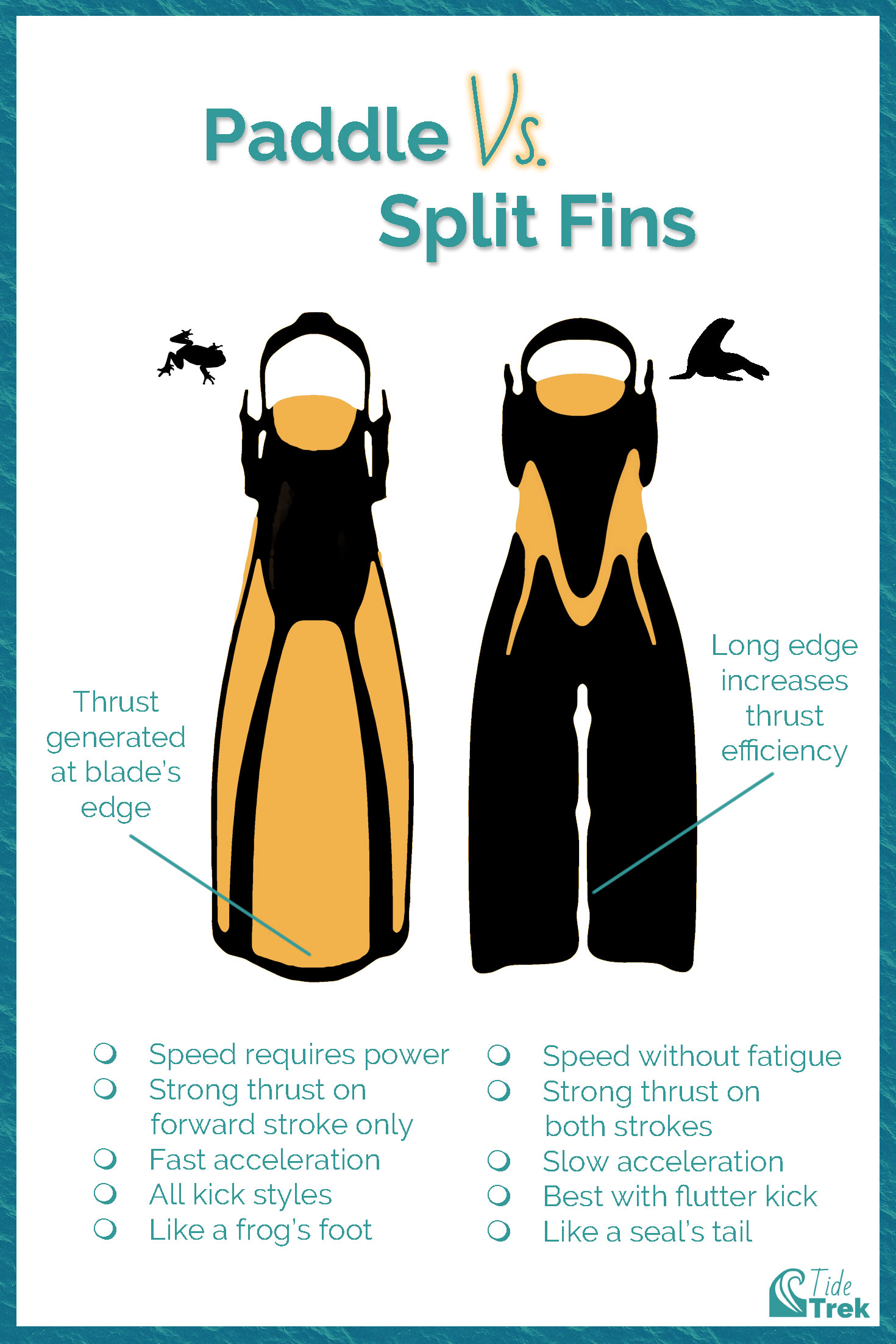


5. What are split fins and should you use them for snorkeling?
Split fins use an innovative design that increases the thrust area of the blade and reduces the power needed for each kick. That means they can accommodate shorter, faster strokes, and work especially well for snorkelers with weaker leg muscles or knees. But, relative to standard (paddle) fins, they have poorer acceleration and maneuverability. As such, some snorkelers and SCUBA divers find they don’t perform as well in strong currents or in environments that require fine and precise movements.
Related Post: Split fins for snorkeling (How they work and recommended models)
For casual and beginner snorkelers, however, they are an excellent choice. If you want a fin that you can get used to quickly if you’ve never snorkeled before, they might be your best option!
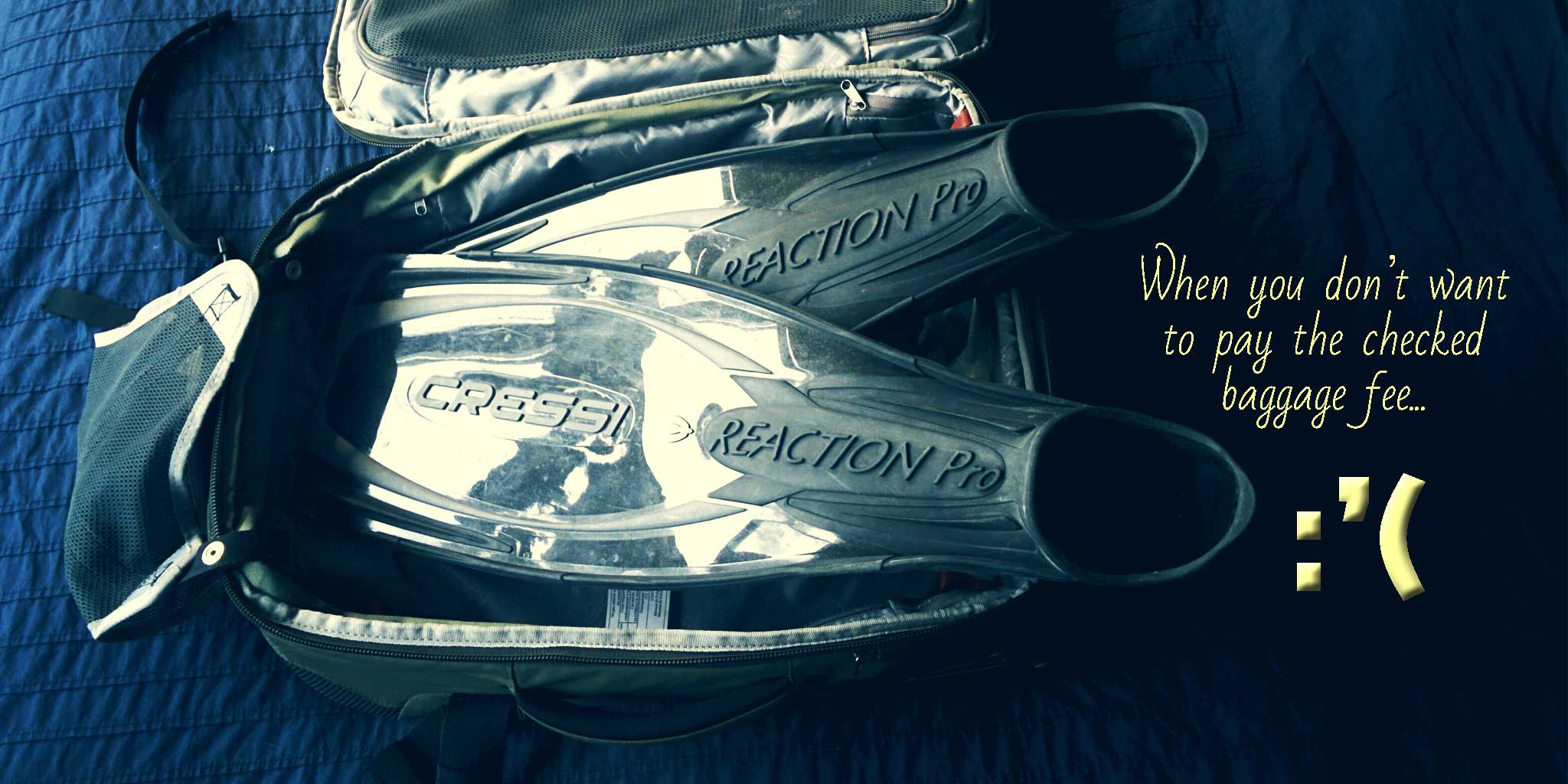


6. Will your snorkel fins fit in your luggage?
These days, traveling by air is much more of a hassle than it used to be. Many airlines now have increased restrictions on baggage size and weight. Thanks to modern fin design and engineering, though, it’s possible to have short, light fins that also provide a decent amount of power to your kicks!
Most of the recommendations I’ve made so far feature lightweight designs with shorter blades. That means they’ll be great options for fitting in your luggage too!
Even so, there are some snorkeling fins out there that have been specifically designed for traveling. The following fins have very short blades (15-20 inches), even shorter than the average snorkeling fin.
1. Cressi Light Short Swim Full Foot Fins
- Price category: Budget $
- Foot pocket: Full-foot
- Stiffness: Soft/flexible
- Sizes: Women’s US 3-13; Men’s US 1-11
- Color options: Blue
- Special features: Soft elastomer foot pocket is comfortable barefoot; open-toe adds comfort and allows water to flow through the foot pocket
- Other notes: True to size for men but may run a bit large for women, so I recommend wearing them with a 1-2 mm fin sock. Ideal for casual snorkeling and swim training (I use them for both!)
2. Cressi Palau Short Adjustable Fins
- Price category: Budget $
- Foot pocket: Open-heel
- Stiffness: Soft/flexible
- Sizes: XSmall (US Women’s 4-6, US Men’s 2-4) to XLarge (US Women’s 12-15, US Men’s 10-13)
- Color options: Blue
- Special features: Soft foot pocket and strap can be worn barefoot
- Other notes: Can be worn with a soled bootie, which makes them ideal for casual snorkeling, surfing, and boogie boarding.
3. Hollis Open Heel Dive Travel Fins F-2
- Price category: Premium $$$
- Foot pocket: Open-heel
- Stiffness: Stiffer blades can be used for SCUBA activity
- Sizes: Small (US Women’s 6-10, US Men’s 4-8) to X-Large (US Women’s 12-15, US Men’s 10-13)
- Color options: Black
- Special features: Vented blades help channel water off the fin for improved thrust efficiency; stainless steel spring straps allow a precise fit and accommodate compression at depth; heavy-duty monoprene injection molding makes these fins very durable
- Other notes: For the traveling snorkeler who also wants to SCUBA dive. Ideal for moderate activity and maneuverability, but not power
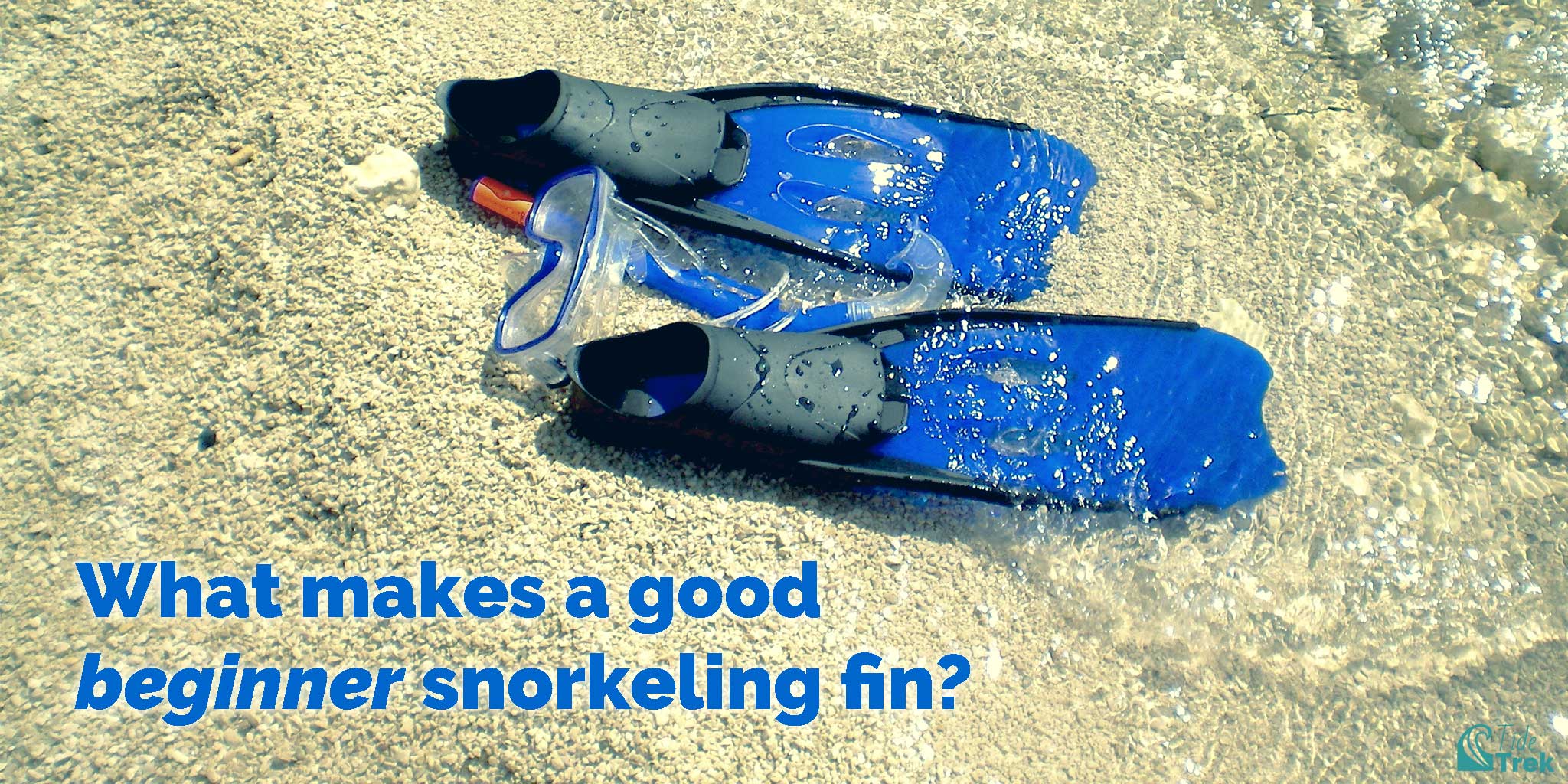


Snorkeling fins for beginners: Take-away points
If this is your first time buying snorkeling fins, then congrats! Fins are like shoes, so once you get used to the comfort and familiarity of having your own, I guarantee you’ll never want to rent them again!
How to choose snorkeling fins as a beginner:
- Browse online shops, visit a physical dive shop if you can, and don’t buy on impulse
- Buy your fins separately, not in a combo with a mask and snorkel
- Don’t use SCUBA fins for snorkeling
- Choose full-foot fins that are 20-25 inches long, soft, and flexible
- Choose split-fins if you have the budget for them
- Guarantee a comfortable fit by getting a pair of fin socks too
Did this guide help you choose a pair of snorkeling fins?
Let me know in the comments what your favorite snorkeling fins are! Got any stories about fins that were especially awful or awesome? I’d love to hear all about it if you’re comfortable sharing!



More fins reading!
Not done learning all about snorkeling fins? Over the next few weeks, I’ll be posting articles covering each of the following topics:
- How do split fins work and when should you use them?
- How should your snorkeling fins fit (full-foot and open-heel)?
- When should you wear socks with your fins?
- Are you also looking for a mask and snorkel?
If you want to keep updated on the content I produce here at Tide Trek, please consider signing up to my mailing list. At the end of each month I prepare a little round-up newsletter that summarizes new articles I’ve written, and content I’ve curated covering all things water sports (even some cool marine science too!)
Disclaimer: Some of the links used in this article are affiliate links. That means I may get a small commission if you buy a product after following the link. If this guide helped you make a decision, consider it like giving me a little thank you!
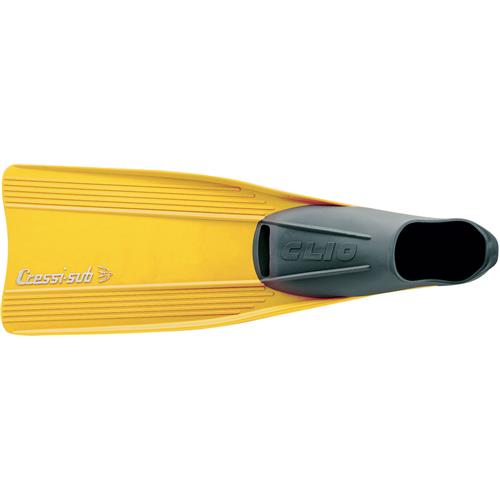
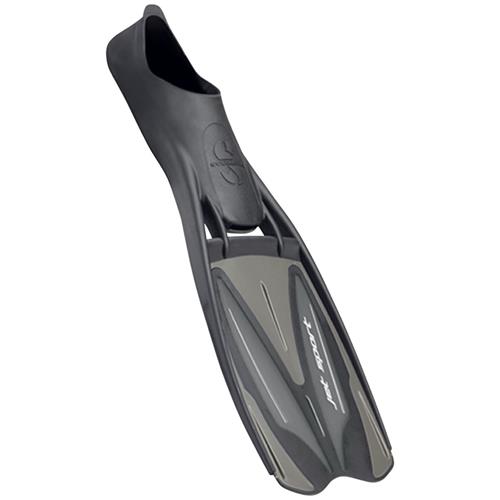

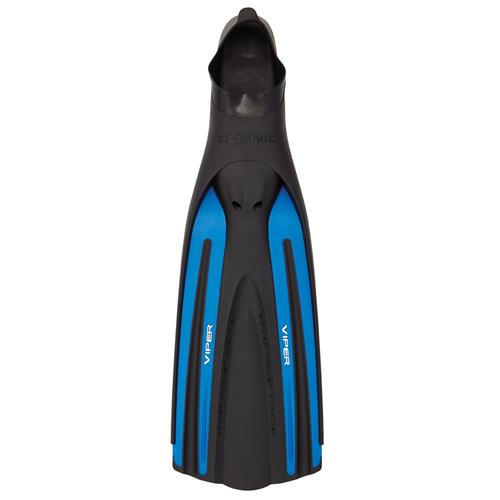
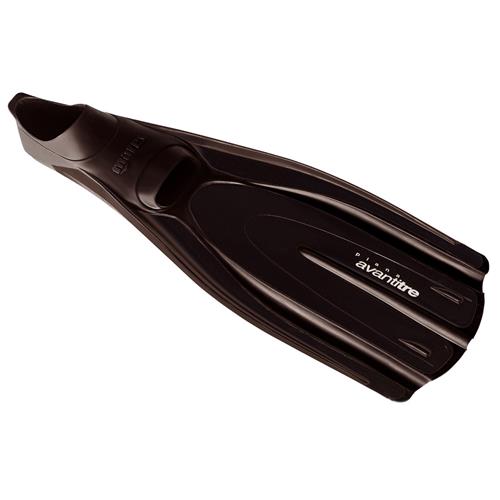
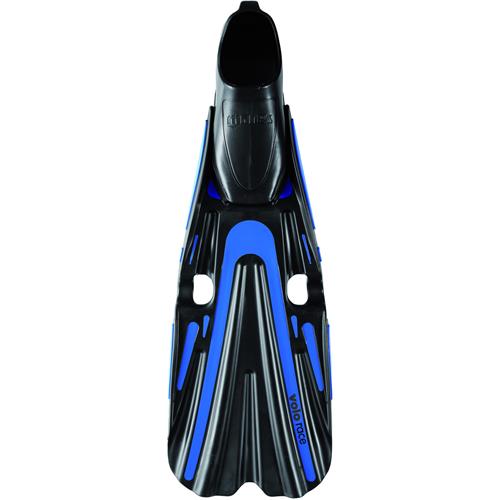
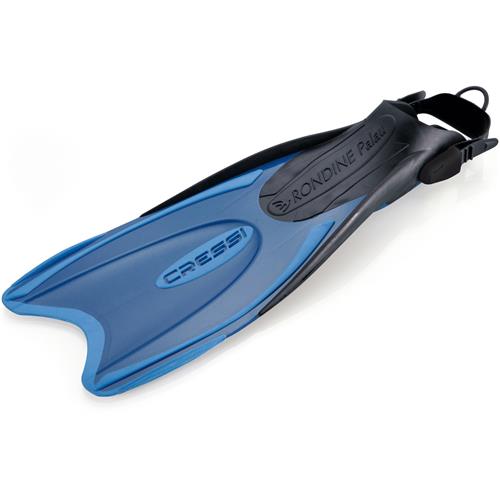
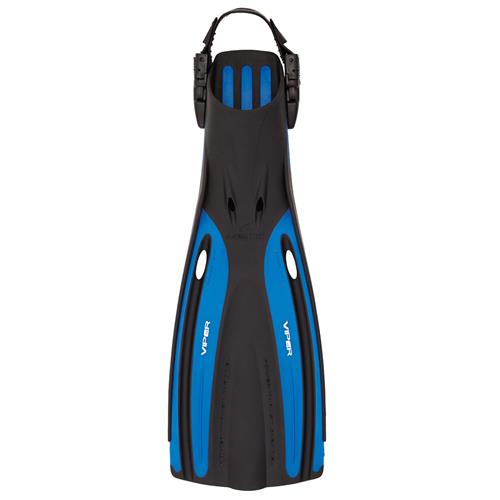

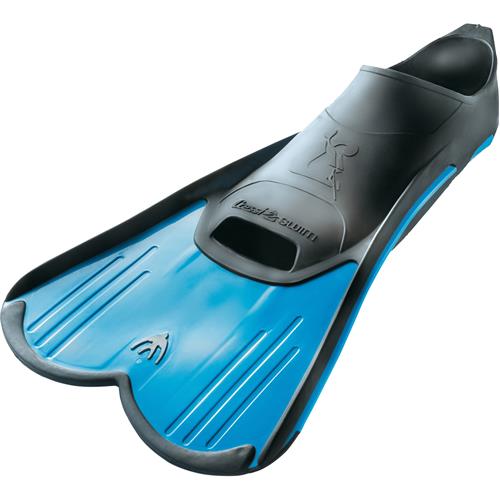
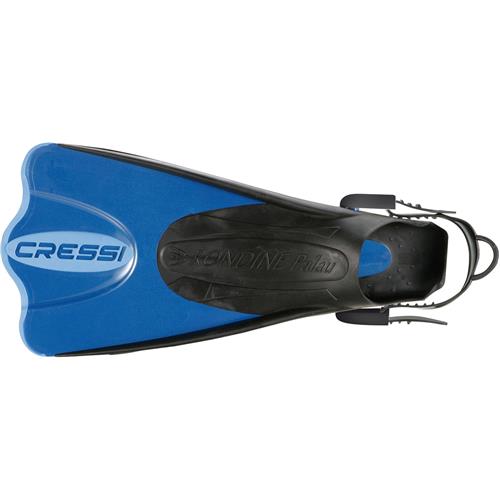
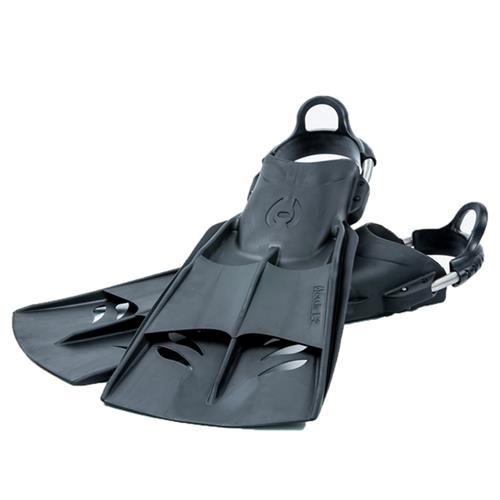
Great guide! Thanks for all your hard work and insight. A great help for someone who wants to start snorkelling. Thank you.